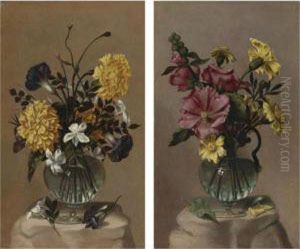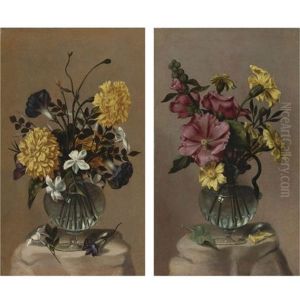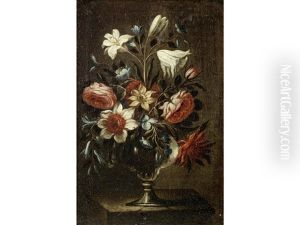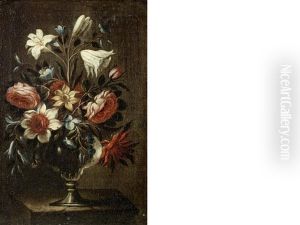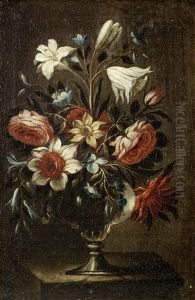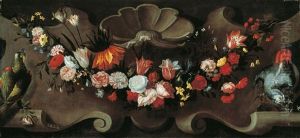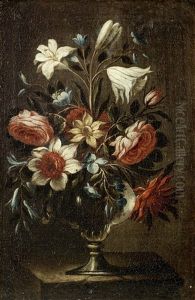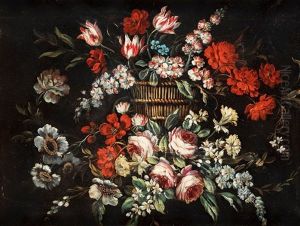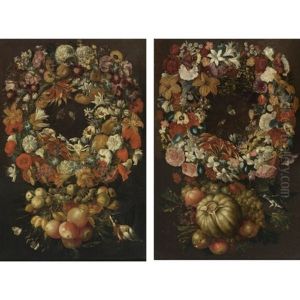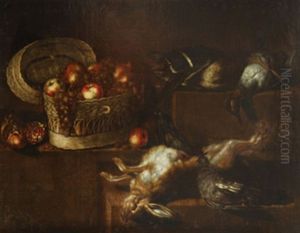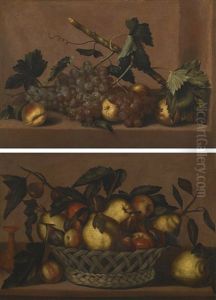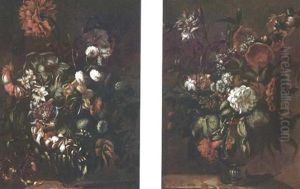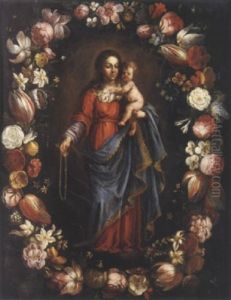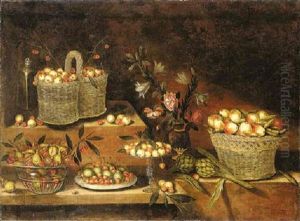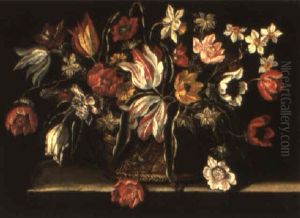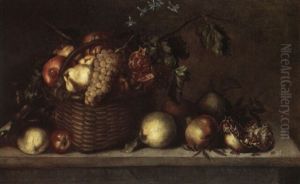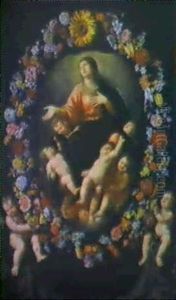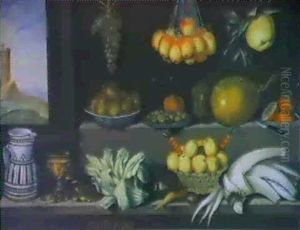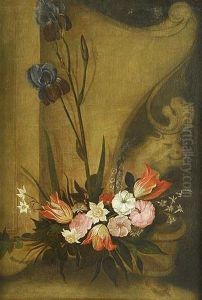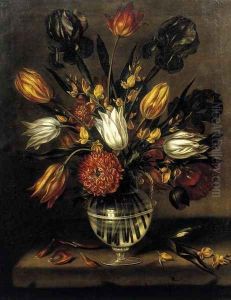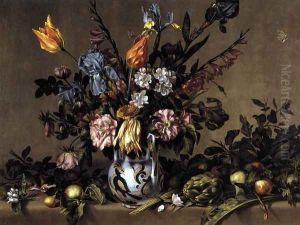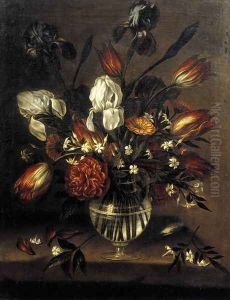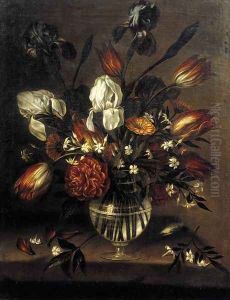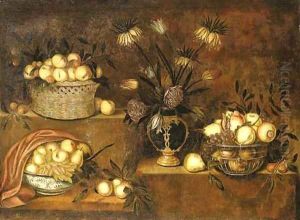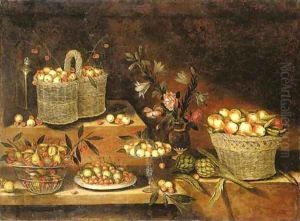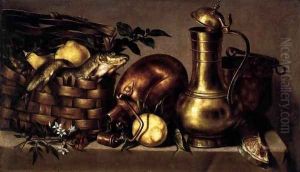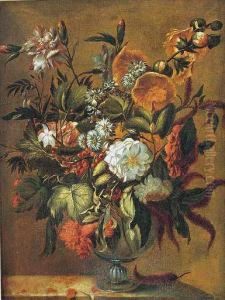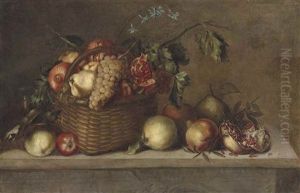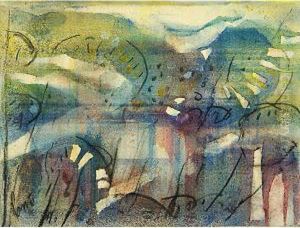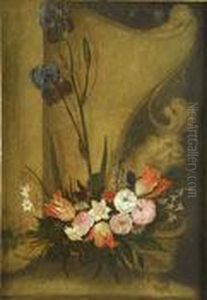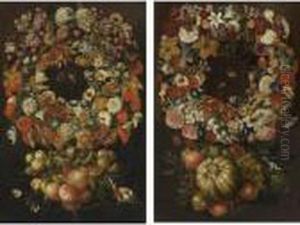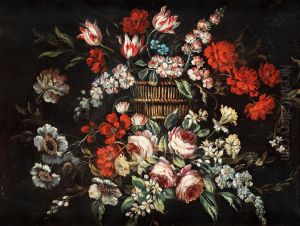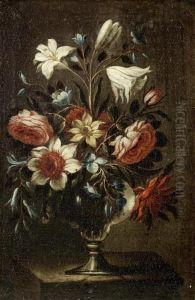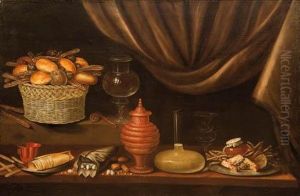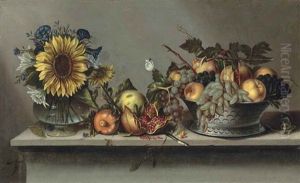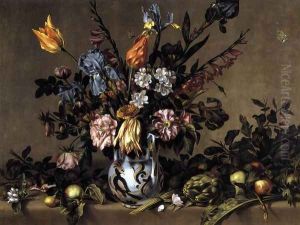Antonio Ponce Paintings
Antonio Ponce was a Spanish painter, born in Valladolid in 1608. He is best remembered for his contributions to still life painting, a genre that he excelled in and helped to further define during the 17th century. His work is characterized by meticulous attention to detail, vibrant colors, and the intricate arrangement of objects, which often included flowers, fruits, and kitchenware, reflecting the Baroque period's fascination with realism and the beauty of everyday objects.
Ponce's artistic journey began in the vibrant cultural milieu of Valladolid, but he soon moved to Madrid, where he was influenced by other prominent painters of the time. Despite the competition, Ponce managed to carve out a niche for himself, particularly in the realm of still lifes, which was gaining popularity in Spain during this period. His ability to imbue ordinary objects with a sense of vitality and his meticulous approach to composition and light made his work stand out.
Throughout his career, Antonio Ponce received commissions from various patrons, including members of the Spanish nobility and religious institutions, which was a testament to his skill and popularity. His paintings not only graced the halls of private residences but were also sought after for their aesthetic value and as expressions of wealth and taste.
Ponce's influence extended beyond his lifetime, as he played a significant role in the development of the still life genre in Spain. His work paved the way for future generations of painters, who drew inspiration from his attention to detail, composition, and the realistic portrayal of objects. Despite the lack of extensive documentation on his life, Ponce's surviving works continue to be studied and admired for their beauty and technical proficiency.
Antonio Ponce passed away in Madrid in 1677. Today, his paintings are held in high regard and can be found in museums and private collections around the world. They serve as a testament to the artist's skill and the enduring appeal of the still life genre. Ponce's legacy lives on, not only in his contributions to Spanish art but also in the broader context of European painting, where he remains a significant figure in the history of still life art.
